Lufthansa to Operate Direct Frankfurt-Hyderabad Flights From January 2024
Radhika Bansal
29 May 2023
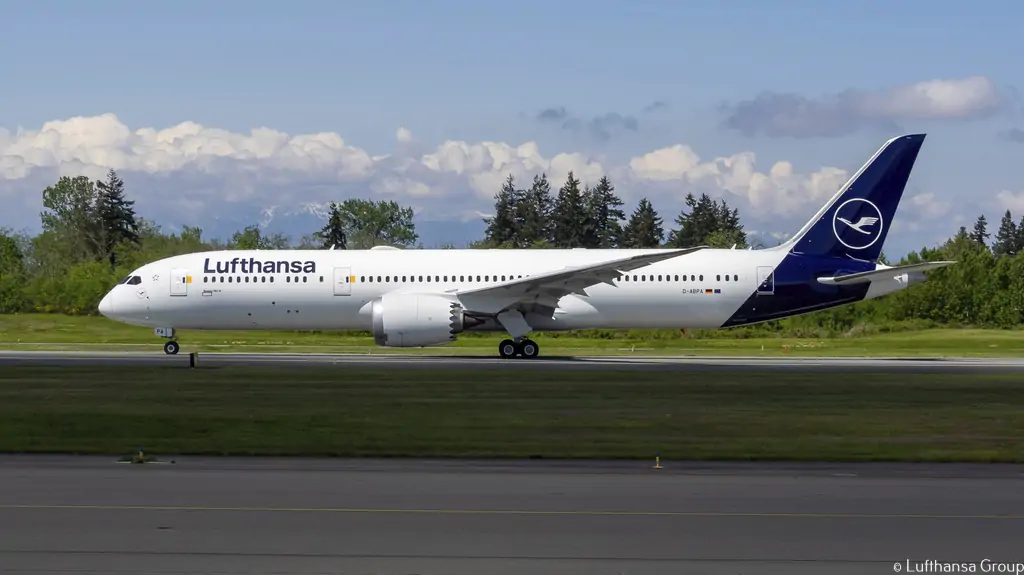
In a move that will benefit passengers travelling to Germany, the Rajiv Gandhi International Airport (RGIA) will offer flights to Frankfurt from January. Starting from January 16, 2024, Lufthansa’s inaugural direct flight from Frankfurt to Hyderabad will be operated using a wide-body Boeing B787-9 Dreamliner. The last time Lufthansa served Hyderabad from Frankfurt was back in October 2011, so nearly twelve years later, the carrier is finally returning the service. The aircraft will feature 26 business class seats, 21 premium economy seats and 247 economy class seats. Lufthansa currently has five Boeing 787-9 Dreamliners in its fleet with a further 34 on order.
Flight Schedule
The flight duration will be approximately 8.30 hours, and it will operate between Frankfurt and Hyderabad three times a week. Departures from Frankfurt to Hyderabad are scheduled for Tuesdays, Fridays and Sundays, while return flights from Hyderabad will take place on Mondays, Wednesdays and Saturdays. This new route opens up exciting possibilities for travellers from Telangana and neighbouring regions, providing convenient access to destinations across Europe.
The inaugural flight to Hyderabad will take off from Frankfurt at 10 A.M. and will reach Hyderabad at 11 P.M. For the return journey, the flight will depart from Hyderabad at 1 A.M. and reach Frankfurt at 6:10 A.M.
With the new service, travellers can now plan their vacation and explore the picturesque terrain, treasure trove of historical sites, vibrant European cities, world-class museums, galleries and much more. Additionally, Frankfurt as a major aviation hub of the world will connect its passengers to multiple cities in North America, including USA and Canada.
GHIAL said that the new route will connect travellers from Telangana and the nearby catchment regions to Europe. “Frankfurt as a major aviation hub of the world will connect you to multiple cities in North America including USA and Canada as well,” it added.
Lufthansa's Flights to Bangalore
One of the fastest-growing aviation markets, India's International traffic is handled largely by foreign carriers, and Lufthansa is taking it further. In total, Lufthansa's footprint in India would tally to five destinations including Delhi, Mumbai, Chennai, Bangalore and now Hyderabad.
The German airline recently firmed its plans on reviving the Munich-Bengaluru route for the winter of 2023, which would be operated on the Airbus A350. British Airways, Air France, and KLM all operate directly from Europe into Bangalore, alongside carriers from the Middle East, so having Lufthansa poised to operate from its two German bases will further solidify its presence, serving the Indian city with a population of over 13 million.
Lufthansa’s Relations with India
Lufthansa has got a long-term vision to strengthen its footprint in the Indian market by catering to the growing population of young working professionals through this expansion. “The brand intends to make the best of India’s s untapped growth opportunity by providing consumers with the most premium travel experiences during their international trips, be it for business or leisure,” a press release said.
The airline had planned to start the service in 2020 before the outbreak of the COVID-19 pandemic hit the world. Lufthansa operates about 80 flights a week between India and Germany. Lufthansa has ordered more than 200 aircraft to be the most modern fleet operating in Europe in the coming years.
German carrier Lufthansa pitched for the liberalisation of bilateral air traffic rights. Lufthansa's comment comes in the wake of Indian authorities blocking any extension of bilateral rights to foreign airlines to promote Indian carriers. "The right assumption is that it has some kind of protectionism. In the long run, I think airlines would be better off if they do partnerships and if they understand that not one airline can generate a global network. It is simply impossible, "
Indian carriers will be better off if the restriction on bilateral rights is eased in the long term and if passengers have more choices for air travel, Harry Hohmeister, head of global markets & network, Lufthansa Group Airlines, said on Thursday, April 27.
For an airline to operate a scheduled flight between two countries, there must be a “bilateral air services agreement” in place, which is negotiated and signed by both countries. This agreement outlines the “bilateral rights”, which determine the number of flights or seats that the airline is allowed to operate per week between the two countries.
Currently, Lufthansa operates 54 flights a week which will be increased to 56 by June end and after adding more services, flights are expected to increase to over 60 per week. Lufthansa Group has had a presence in the Indian market for more than 90 years.
About Lufthansa
Deutsche Lufthansa AG, commonly shortened to Lufthansa, is the flag carrier of Germany. When combined with its subsidiaries, it is the second-largest airline in Europe in terms of passengers carried after ultra-low-cost carrier Ryanair. Lufthansa is one of the five founding members of Star Alliance, the world's largest airline alliance, formed in 1997. Besides its own services, and owning subsidiary passenger airlines Austrian Airlines, Swiss International Air Lines, Brussels Airlines, and Eurowings (referred to in English by Lufthansa as its Passenger Airline Group), Deutsche Lufthansa AG owns several aviation-related companies, such as Lufthansa Technik and LSG Sky Chefs, as part of the Lufthansa Group. In total, the group has over 700 aircraft, making it one of the largest airline fleets in the world.
Read next
Air travel has evolved dramatically over the years, not solely in terms of convenience but also in terms of safety. Today, millions of passengers can fly throughout the world with confidence, knowing that their journey is safeguarded by stringent safety precautions. These safety precautions are the result of the unwavering work of individuals like Don Bateman, who have committed their entire lives to improving aviation safety.
The Evolution of Aviation Safety
The Importance of Air Travel Safety
In the aviation sector, safety has always been the top concern. As the number of air travelers expanded, so did the necessity for strong safety measures to avoid mishaps and maintain passenger safety. Governments, regulatory agencies, and aviation experts have all worked relentlessly to establish an environment in which flying is not only efficient but also extremely safe.
Advancements in Technology and Systems
The growth of aviation safety is inextricably linked to technological improvements. Engineers and developers have created a plethora of methods and technologies to reduce hazards and improve safety throughout the years. Because of these developments, flying is now one of the safest modes of transportation, exceeding even more conventional modes like car or rail travel.
Don Bateman: The Creator of GPWS
Air travel has become an essential part of the way we live, connecting people and cultures all over the world. With millions of flights taking place each year, aviation safety is of the utmost significance. Flying nowadays is safer than ever before, thanks to ongoing technological developments. The Ground Proximity Warning Device (GPWS), designed by Don Bateman, is an essential security measure that plays an essential part in safeguarding the well-being of passengers and crew. Don Bateman departed on Sunday, May 21st, at the age of 91, leaving behind a legacy that has transformed aviation safety.
The Vitality of GPWS in Aviation Safety
How Does GPWS Work?
GPWS monitors the aircraft's location relative to the ground employing a network of sensors and data analysis algorithms. GPWS can identify potential hazards such as rapidly decreasing altitude, proximity to terrain, or approaching obstructions by continually analyzing altitude, speed, and other important factors. The system collects data from numerous aircraft systems, including the radio altimeter, machmeter, air data computer, ILS, landing gear/flap position, and navigation systems. When a dangerous condition occurs, GPWS sends out visual and auditory alerts to warn pilots and prompt corrective action.
GPWS Features and Functions
Each mode has a first boundary that, if crossed, informs the pilot. However, several of the more important modes (one, two, and four) include a secondary boundary that, if exceeded, causes the system to issue a warning call to the pilot, signaling that quick action is required.
| ||
Operational Mode | Alert call-outs (exceeding the first boundary) | Warning call-outs (exceeding the second boundary) |
1. Excessive Rate of Descent | "Sink Rate" | "Pull Up" |
2. Excessive Terrain Closure | "Terrain x2" | "Pull Up" |
3. Altitude loss during TO/GA (Take-Off / Go-Around) | "Don't Sink" | |
4. Proximity to terrain in the wrong configuration (Landing Gear / Flap position) | "Too Low Gear"/"Too Low Flaps" | "Too Low Terrain" |
5. Descending below the glide slope | "Glide Slope" | |
6. Descending below minimums / Exceeding bank angle | "Minimums"/"Bank Angle" | |
Over time, a seventh mode was added, in which the GPWS system analyzes data from the Air Data Computer to detect any signals of probable wind shear in the aircraft's proximity. If probable wind shear is identified, the system issues a direct warning call out to the pilot, "Windshear," so the pilot may be prepared to take any necessary steps.
Though the system cannot identify the specific position of the wind shear, it is beneficial for pilots to be aware of its existence, particularly during the landing phases of a flight, when an early warning may allow the pilot to be better prepared to respond or execute a go-around, as required.
Other Aviation Safety Innovations
Additional Safety Systems and Technologies
While GPWS is a cornerstone of aviation safety, the industry is always looking for ways to enhance it. Engineers and researchers are working on enhanced safety systems and technologies, such as:
Traffic Collision Avoidance System (TCAS): TCAS assists pilots in avoiding mid-air collisions by providing real-time information on nearby aircraft and issuing resolution advisories if necessary.
Enhanced Ground Proximity Warning System (EGPWS): EGPWS is a further sophisticated form of GPWS that includes features such as predictive terrain mapping, weather data integration, and enhanced obstacle detection capabilities.
Automatic Dependent Surveillance-Broadcast (ADS-B): ADS-B enables aircraft to broadcast and receive real-time information, augmenting situational awareness and collision avoidance.
Legacy and Prospects
Don Bateman's legacy as a pioneer in aviation safety will continue to influence the industry for many years to come. His innovation, the GPWS, has become an essential component of modern aircraft, safeguarding the safety of passengers and crew. As aviation technology advances, his achievements are guaranteed to inspire new advancements in safety systems, introducing the industry to even greater heights of safety and reliability.
Conclusion
Don Bateman's extraordinary contribution to aviation safety through the development of the Ground Proximity Warning System has left an indelible effect on the industry. His devotion, vision, and commitment to improving aviation safety have made him a real pioneer. While we grieve his death, we also celebrate the legacy he leaves behind and the numerous lives saved by his wonderful innovations. Don Bateman's work exemplifies the potential of human intellect and innovation to foster a more secure and safe aviation sector.
With Inputs from SeattleTimes
Read next
Indira Gandhi International (IGI) airport in Delhi may expand to operate two international terminals soon. Terminal 1 (T1) is expected to be completed this year after facing major delays in renovation due to the Covid-19 lockdown and restrictions. Media reports expect T1 to offer domestic flights and allow international airlines to operate soon. IndiGo has asked Delhi International Airport Ltd (DIAL) to offer international services in T1, which is being renovated under the GMR Group.
IndiGo has reportedly asked DIAL to allow the airline to operate internationally from T1. The airline currently flies out of all terminals and according to an aviation report shared by the Directorate General of Civil Aviation in April, the flight makes up the majority of the market share at 57.5%. The airline expects to cross the 10-crore passenger mark (domestic plus international) in the fiscal year 2023-24 and enter the league of the world’s biggest airlines by passenger volume. IndiGo operates around 310 planes and expects to double its fleet count before 2030. The Tata Group has also recently ordered 470 planes, indicating significant airline expansion plans.
According to the Times of India, a source from the airport stated that air travel has picked up significantly and passed pre-pandemic levels. While T1 will stick to the original completion plans to avoid any further delays, the source stated that clearance from multiple government agencies will be sought to discuss the potential of adding the facilities required for international services.
Going by the expansion plans revealed by the GMR Group, renovations are expected to be completed by September of this year, with upgraded facilities to manage higher passenger numbers and increase the infrastructure and service quality of the terminal. The area of the terminal is expected to increase from 60,000 sq metre to 169,000 sq metre, with entry gates expanding from 8 to 13. Vast space for parking, VIP lounges, a modern food court, and better use of space for movement within the airport are all part of the renovation plans.
Upon completion of phase 3A, the airport will be able to handle 100 million annual passengers. Budget carriers are increasingly operating international flights, particularly out of Delhi, and a dedicated terminal that can handle domestic and international operations would be far more convenient for such airlines and their passengers.
Transitioning of the Terminals
It is expected that Terminal 3 of the IGI Airport will eventually be used for Tata Group airlines, including Air India-Vistara and AI Express-AirAsia India, combined, as well as foreign carriers. T1 will handle flights of low-cost carriers, including IndiGo, while T2 will be designated for full-service carriers' domestic flights. This would help minimise confusion and inconvenience for passengers who may otherwise need to travel between different terminals.
Transitioning between different terminals is currently a significant pain point for passengers, as there are no automated people-mover systems like an air train to smoothen the process. The expansion of Terminal 1 is a reflection of the growing demand for air travel in India, which has rebounded strongly since the pandemic.
Interestingly, Terminal 2 was initially built as an international terminal for Asiad in 1982 and played that role until the opening of T3 in 2010. Since then, it has mainly been used for domestic operations and is expected to continue serving domestic flights until a new terminal is built.
Terminal 3 expansion
Phase 3A expansion work is underway at the Indira Gandhi International Airport (IGIA), operated by Delhi International Airport Ltd (DIAL). "Post completion of Phase 3A expansion work scheduled in 2023, Delhi airport will become the only Indian airport whose terminals would be able to handle 100 million passengers per annum (MPPA)," it said in a release. The new expansion area will be around 3,000 sqm, with 7 F&B counters, 10 check-in counters, 15 frisking booths, and 8 X-ray machines. This will help decrease waiting time and help more passengers, said officials. The project being executed by L&T is worth an estimated USD 850 million and will also see a fourth runway measuring around 4,400 meters long and 75 meters wide, developed during the second phase of expansion.
The airport offers connectivity with more than 142 domestic and international destinations. From April 2022 to February 2023, the airport handled more than 14.50 million transfer passengers (hub traffic), including more than 3.37 lakh international to international transfer passengers. Currently, 63 airlines operate out of Delhi Airport.
Passenger Traffic Up By 95%
Post Covid, the Delhi International Airport has seen a 95% uptick in passenger load — from 5.02 lakh in March 2021 to 9.83 lakh in March 2022 — according to data from officials. As per the Airports Authority of India, this year, the Delhi airport has handled passenger traffic which is 49% more than the second-largest airport in India. In 2022, the airport catered to 15 million international passengers – 27.5% of India’s total international traffic – to become the highest among all Indian airports. Over the past year, several reports of passengers have complained of crowding, congestion and long lines.
What is an Aviation Hub?
A hub requires an airport and its main airline/s be able to provide seamless transfer to passengers - something that Emirates does in Dubai, Qatar Airways at Doha, Singapore Airlines at Changi, Lufthansa at Munich and Frankfurt, and United at Newark. India is seeing the emergence of two mega airlines - IndiGo, which is already a giant, and Tata Group consolidating its four airlines under the Air India umbrella. The government plans to have IGIA as the hub airport with Air India and IndiGo as the mega carriers providing all kinds of transfers - domestic to domestic, domestic to international, international to domestic and international to international.
However, this will require automatic people mover or an air train connecting various terminals - something hubs like New York JFK, Dubai, and Zurich have - to ensure passengers can seamlessly transfer between T1 on one side and T3/2 on the other. Work on this is yet to begin. Even at present clocking almost 7 crore passengers annually, transiting between T1 and T3/2 is a pain for IGIA flyers. The proposed air train is hugely delayed with no headway so far.
"(Direct) connectivity from IGIA is well spread across (North) America, Europe, Australia and Asia. Supported by 63 trusted airlines, it provides direct connectivity to places like New York, San Francisco, Newark, Chicago and Washington in North America," DIAL said.
Read next
Jet Airways Lenders Get 30 Days Extension From NCLAT to Make Payments to Lenders
Radhika Bansal
27 May 2023
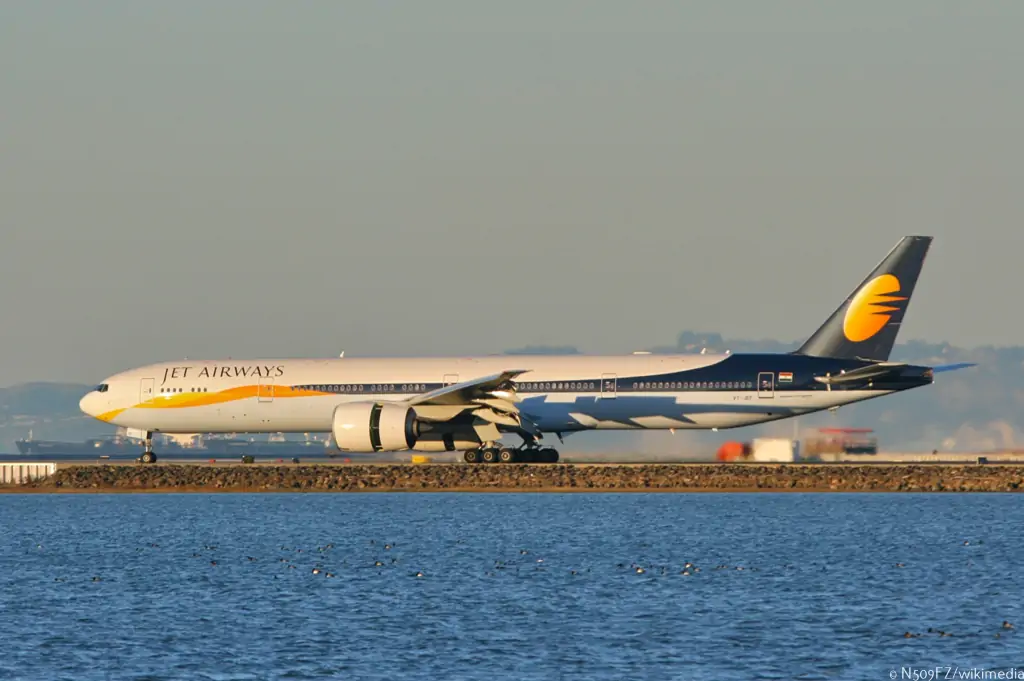
As per the latest developments in the Jet Airways insolvency case, the National Company Law Appellate Tribunal (NCLAT) has allowed a three-month extension to Jalan Kalrock Consortium (JKC) to make payments to lenders one of them being The State Bank of India as per the approved resolution plan. JKC had earlier expressed interest in relaunching the airline.
NCLAT restrained lenders from invoking bank guarantees provided by JKC. As per the earlier effective date of November 16, JKC was expected to make payments before May 15. NCLAT has exempted the period between November 16 to March 3 from the 150-day window for payment. Hence, the extension to JKC.
The NCLAT also criticised SBI for threatening to invoke bank guarantees instead of cooperating with JKC to implement the resolution plan. It noted that performance bank guarantees can be invoked by lenders, but only when a successful resolution applicant has failed to implement the plan.
SBI Criticised by NCLAT
Pulling up SBI for threatening to invoke bank guarantees as opposed to co-operating with Jalan Kalrock in implementing the resolution plan, NCLAT noted "Monitoring Committee (of which SBI is a part of) has to act as a facilitator for implementation of the Resolution Plan instead of finding fault and taking steps, which does not facilitate the implementation, rather delay the implementation."
The tribunal's order further notes that the time is yet to come for lenders to take coercive measures as Jalan Kalrock is still trying to implement the resolution plan. According to the order "There is no doubt that Performance Bank Guarantee can be invoked by the Lenders, but the said invocation can only take place when SRA has failed to implement the Plan. Present is a case where directions have been issued to both lenders and SRA (Jalan Kalrock) to implement the Plan and the event of failure of the Plan has not yet arrived"
The tribunal's order thus directs SBI not to invoke the performance bank guarantee. By this order, Jalan Kalrock Consortium will now get additional time to pay its dues to SBI.
On May 22, the tribunal reserved its decision on a plea by the consortium, which emerged as a successful bidder in the Jet Airways insolvency resolution process, seeking directions to stop SBI to invoke its performance bank guarantee of INR 150 crore. Even though the NCLAT's daily order sheet indicated that the order would be passed on May 30, the appellate tribunal chose to pronounce the order five days in advance.
On January 13, the National Company Law Tribunal (NCLT) allowed the transfer of the beleaguered airline to the consortium led by London-based Kalrock Capital and UAE-based entrepreneur Murari Lal Jalan. It also asked the consortium to make payments by May 15, 150 days from the initiation of the ownership proceedings, but the NCLAT exemption gives it more time.
The consortium was to make the first tranche of the payment to Jet's lenders before May 15 but it didn't and feared that the SBI would invoke the performance bank guarantee of INR 150 crore instead of INR 175 crore worth of dues.
The airline's ownership can't be transferred to the consortium if the payment is not made. The air operator's certificate of Jet Airways expired on May 19. Lenders of the airline had approached the NCLAT as they opposed the ownership transfer to the consortium. They alleged that the consortium had not fulfilled its obligations.
A refundable earnest deposit of INR 15 crore was made to the lenders in July 2020 when JKC submitted its resolution plan to lenders. The first performance bank guarantee tranche of INR 47.5 crore was deposited in October 2020 when the committee of creditors approved the resolution plan. The remaining amount of INR 87.5 crore was deposited in the second PBG tranche on May 20 last year—called the "effective date"—when all CPs were fulfilled.
Jet Airways was grounded in April 2019 over growing losses and a debt of about INR 8,000 crore. In October 2020, the airline's Committee of Creditors (CoC) approved the revival plan submitted by the Jalan-Kalrock consortium. Jet Airways suspended all its operations leaving its almost 22,000 employees in the lurch.
Jet Airways' Revival Plan
Debt-ridden Jet Airways, which flew for 25 years, shuttered operations on April 18, 2019. The insolvency resolution process of the carrier began in June 2019 and the National Company Law Tribunal (NCLT) approved a resolution plan submitted by the JKC in June 2021. Last week, the Consortium reportedly approached the NCLT asking it to grant more time to pay the creditors and implement the revival plan.
In January, the NCLT approved the transfer of Jet Airways’ ownership to JKC, stating that the conditions had been met. The tribunal set November 16, 2022, as the effective date for the resolution plan. Lenders of Jet Airways had approached the NCLAT, opposing the transfer of ownership to the consortium. They alleged that JKC had not fulfilled its obligations and argued against the ownership transfer.
Jet Airways was grounded in April 2019 due to substantial losses and approximately INR 8,000 crore in debt. In October 2020, the airline’s Committee of Creditors approved the revival plan submitted by the Jalan-Kalrock consortium.
Furthermore, JKC's inability to fulfil certain AOC renewal criteria poses additional challenges. One of the major shortcomings is the consortium's lack of aircraft, a vital component for operating an airline. The absence of necessary pilots and cabin crew on the consortium's rolls further disqualifies JKC from eligibility for AOC renewal. Sources indicate that the two Boeing 737 aircraft that were leased by JKC have been reclaimed by the lessors, exacerbating the challenges faced by the consortium.
JKC missed the May 15 deadline to pay the first tranche to Jet Airways' creditors. Consequently, the consortium sought more time from the National Company Law Tribunal (NCLT) to fulfil its financial obligations. It is important to note that JKC does not yet have ownership of Jet Airways, further clouding the future prospects of the airline, and renewing this license won't be easy as the airline will have to convince the DGCA about its ability to fly which in Jet's case may not be possible as yet.
Sources also say that the Jet 2.0 team is almost deserted with no senior executive left in the airline after CEO-designate Sanjiv Kapoor quit last month. It has been nearly two years since the NCLT approved the resolution plan of Jalan-Kalrock but the airline is still far from taking off and hopes to see it in the skies again are only fading.
Read next
Envoy Air connects smaller cities and towns to major hubs as part of American Airlines' regional network. The airline has a long history of offering dependable and efficient services. Envoy Air, on the other hand, is making significant changes to its fleet composition in order to keep up with evolving marketplace requirements and improve the customer experience.
Envoy Air: Background
Before we delve into the retirement of the ERJ-145 aircraft, allow us to take a look at Envoy Air's history. Envoy Air is an affiliate airline that provides feeder flights for American Airlines under the American Eagle brand. Envoy Air, headquartered in Irving, Texas, is critical in linking smaller cities to American Airlines' extensive network.
Retirement of ERJ-145 Jets
Envoy Air, an American Airlines regional subsidiary, has announced plans to retire its remaining fleet of Embraer ERJ-145 regional aircraft. This move comes as the airline expands its operations by introducing bigger Embraer 170 and 175 aircraft.
Furthermore, the ERJ-145 aircraft have a restricted seating capacity of roughly fifty passengers. With the growing demand for regional air travel, Envoy Air recognised the need to deploy larger aircraft that could accommodate additional passengers. This change enables the airline to better satisfy passenger demand while also increasing revenue possibilities on key routes.
On May 1, it was transferred straight from Springfield, Missouri (SGF) to Marana, Arizona (MZJ) after conducting a revenue trip from Chicago O'Hare to Springfield, Missouri (SGF). The great majority of Envoy E145 operations are now based at American's hub in Chicago O'Hare. Envoy-operated E145s now service a number of cities, including Toronto (YYZ), Champaign (CMI), Peoria (PIA), and Manhattan (MHK).
Transition to Larger Aircraft
Envoy Air has begun introducing larger aircraft to its fleet to meet the increased demand for regional air travel. With the arrival of Embraer 170 and 175 aircraft, the airline can boost seating capacity while preserving operating efficiency. These bigger aircraft can carry between 70 and 80 passengers, offering consumers a more pleasant and roomy flight experience.
Advantages of Larger Aircraft
Envoy Air will benefit from the addition of bigger aircraft in various ways. To begin with, higher seating capacity helps the airline convey a greater number of passengers, which increases revenue generation. Envoy Air can boost load factors and overall profitability by carrying more passengers.
Envoy Air's Implications
The retirement of the ERJ-145 fleet and the shift to larger aircraft will have various consequences for Envoy Air. For starters, it prepares the airline to compete more effectively in the regional aviation sector. Envoy Air may differentiate itself from the competition and attract more consumers by increasing seating capacity and improving passenger comfort.
Conclusion
Envoy Air's decision to retire its Embraer ERJ-145 regional jet fleet in favor of bigger aircraft is a significant strategic shift. The airline hopes to improve operational efficiency, handle rising passenger demand, and increase overall profitability by doing so. Envoy Air will benefit from this transformation in various ways, including higher income potential, enhanced passenger comfort, and a more sustainable business model. Envoy Air's fleet continues to evolve, allowing it to better serve its clients and survive in the competitive regional aviation business.
With Inputs form AeroXplorer
Read next
The aviation sector is exhibiting encouraging indications of revival, indicating that air traffic will significantly rebound. Packed airports and overbooked flights are clear indicators of increased demand, and this rebound has far-reaching ramifications for the industry's employment needs. As more people take to the skies, airlines and other stakeholders must guarantee that they have an appropriate number of personnel to meet the increasing demand. Flydubai is one such example, with Flydubai, an airline presently on a massive recruiting frenzy to recruit 1,120 additional personnel in 2023.
Signs of Recovery in the Air Travel Industry
Several indicators point to the resurrection of the airline sector. Airports are becoming increasingly crowded, with lengthy queues at checkpoints and vibrant departure lounges. Furthermore, flights are routinely overbooked, making it difficult to acquire last-minute tickets. These indicators suggest a significant growth in passenger numbers as well as increased trust in air travel.
The Air Travel Industry's Workforce Demand
One of the numerous negative repercussions of the COVID-19 epidemic on the aviation sector was the large number of layoffs. Thousands of employees lost their jobs when airlines began to ground their fleets in early 2020. Now that air travel demand is recovering, the aviation workforce may be needed more than ever.
Flydubai's Hiring Spree
Flydubai, a renowned low-cost airline located in Dubai, is an excellent example of an airline taking advantage of the industry's revival. Flydubai intends to hire 1,120 more staff in 2023 to meet the growing demand for its services. The airline is working on future development, which is based on an airline that presently covers 110 destinations across the Middle East, Africa, Europe, and Asia. The airline's recruiting frenzy includes positions in a variety of areas, providing possibilities for people with a wide range of skill sets and career goals.
The massive recruiting process has already begun: since January of this year, the airline has employed 320 individuals, averaging two every day! Flydubai hopes to add 800 more members to its family by December 2023. Recruitment is open for all opportunities available in the aviation industry, from pilots and cabin crew to maintenance technicians and office-based employment.
Opportunities in the Air Travel Industry
The aviation sector provides several work possibilities in a variety of disciplines. For those interested in aviation, operational professions like pilots and cabin crew members provide an interesting career path. These positions need technical expertise, great communication skills, and a commitment to passenger safety and satisfaction.
Job Market Prospects and Future Trends
The recovery of the airline sector is projected to continue, providing major job possibilities in the following years. Airlines are going to require more personnel to fulfil rising demand as travel restrictions ease up and more people regain confidence in flying. This creates a favorable job market for aviation experts and those looking to enter the business.
Conclusion
Finally, the airline sector is seeing a tremendous rebound, as seen by congested airports, overbooked flights, and rising ticket sales. This revival has resulted in an increase in workforce needs at all levels, with airlines such as Flydubai aggressively recruiting additional staff to fulfil rising passenger demand. The sector provides a wide range of work possibilities, from operational to managerial and senior jobs. Technical expertise, leadership ability, and specialized knowledge are highly sought in this industry.
With Inputs from Zawya



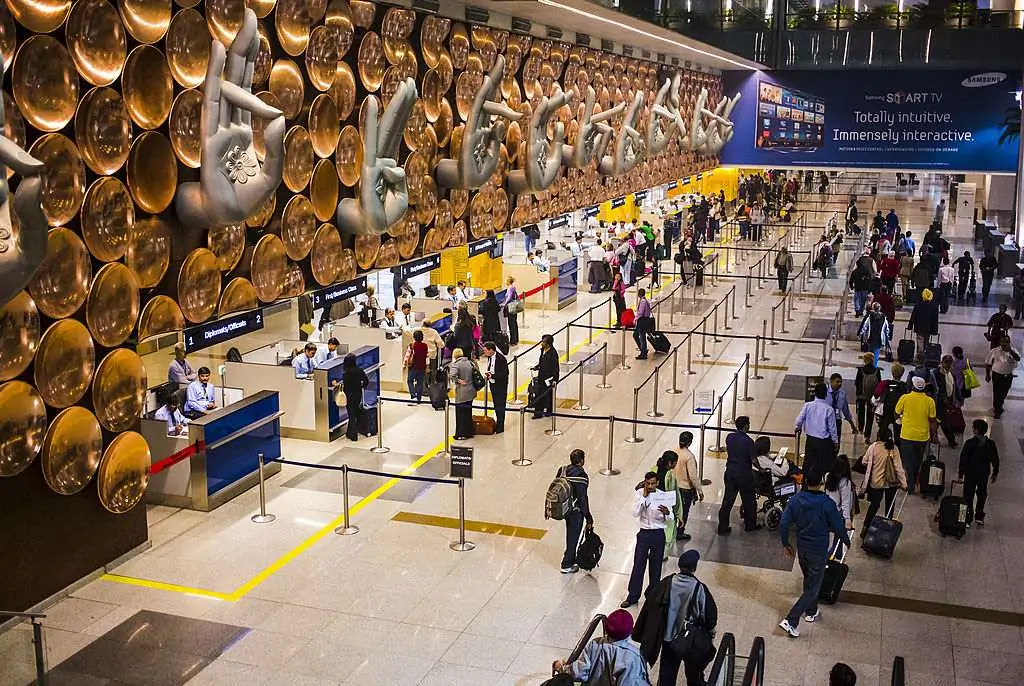
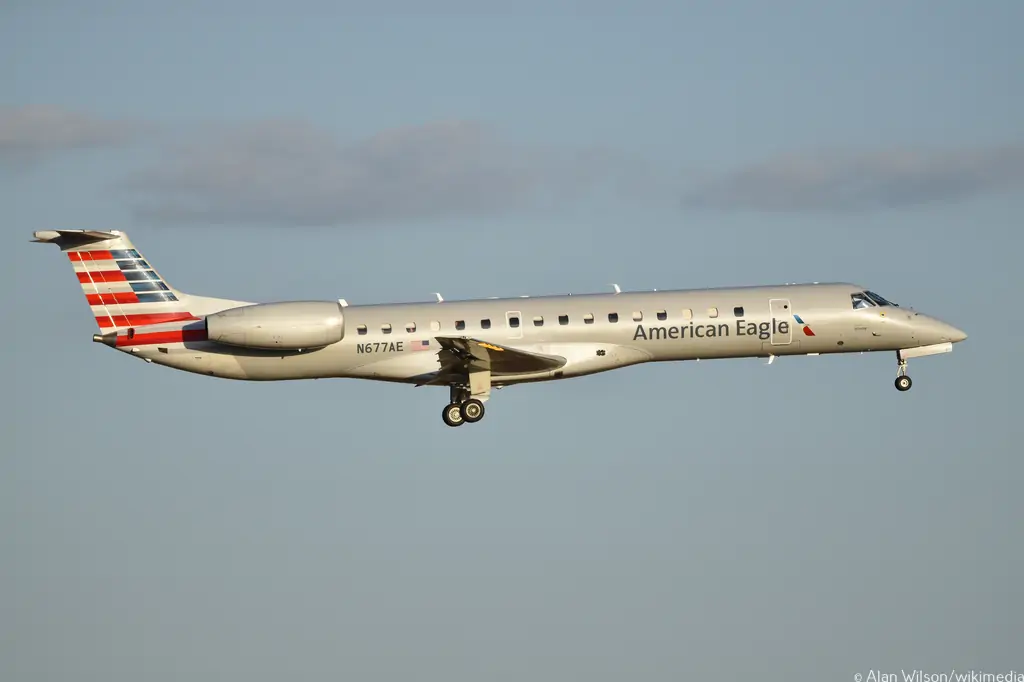
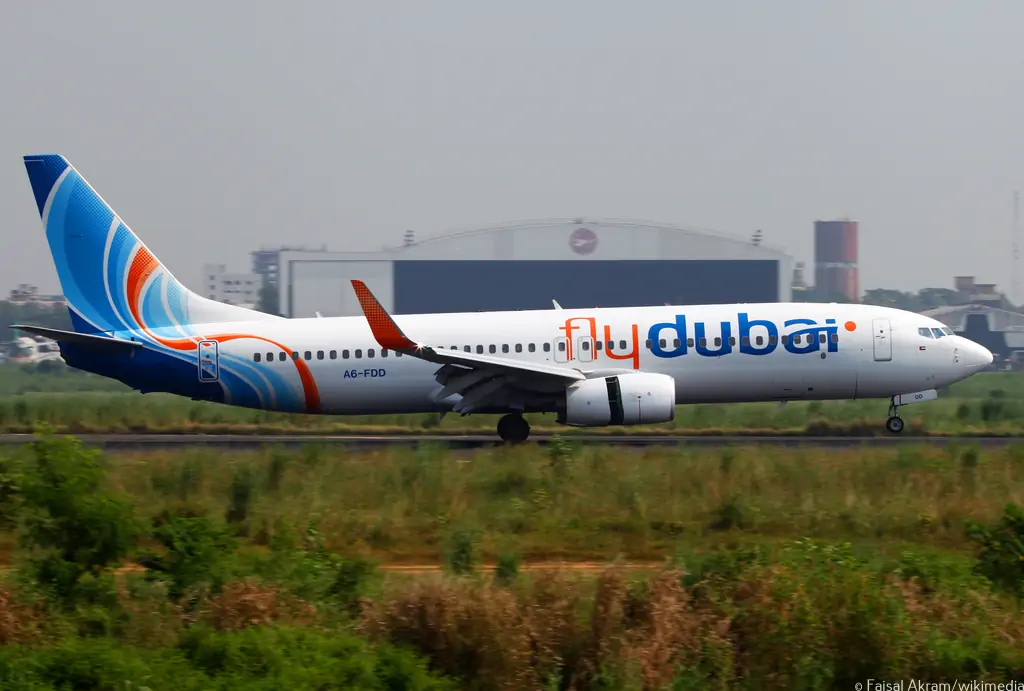
Comment